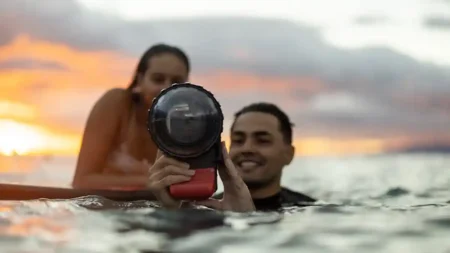While the Nikon Z30 is primarily aimed at vloggers, it’s also a capable skills camera. There’s a good level of detail visible in images captured at the lowest ISO settings and it’s maintained well up to around ISO 6400. With 20.88Mp, they can’t compete with the 24Mp Nikon Z6 II or 45.7MP Nikon Z7 II, but they still look good at normal viewing sizes. If you pixel-peep ISO 6400 images, however, you’ll spot that the very finest details are a bit smudged and there’s subtle coloured speckling in the raw files.
Nevertheless, images look natural throughout the native sensitivity (ISO) range and (with the right white balance) colours match the original scene when the Standard Picture Control is selected.
Naturally, the Z30’s AF doesn’t match the Nikon Z9’s, but it proved very reliable during my testing. The human eye AF is reliable and the animal eye AF is reasonably good, but it’s not the best available – especially with birds.
Like Nikon’s other Z-series cameras, it’s important to ensure that the Z30 is set to full-time AF (F-AF) when you’re shooting video. Continuous AF (C-AF) only works when the shutter release is half-pressed but in F-AF, there’s no need to press a button.
It’s disappointing that Nikon hasn’t stabilised the sensor in the Z30. The stabilisation (VR) system in the Z 16-50mm f3.5-5.6 VR kit lens does a reasonable job of keeping the footage steady if you’re standing still with the camera, but there’s always the odd jerk. Turning on the in-camera electronic stabilisation (E-VR) makes the footage a bit smoother and irons out some of the movement, but it’s still not up to the job if you walk with the camera.
If you’re holding the camera at arm’s length with the camera pointing back at yourself as you walk, the fact that the camera’s movement follows your own makes the clips more acceptable, but as a rule, if you’re planning to shoot run and gun video, you need a gimbal for the Z30.
When it’s held steady, the Nikon Z30 is capable of producing very attractive 4K that has plenty of detail and looks natural. The Full HD results are also very good and it’s great to see 60p and 120p available. The Z30 is an entry level camera but we’re seeing more models offering 4K 60p these days and, as it’s aimed at vloggers, it feels like a significant omission from the Z30.
As you’d expect a windmuff is essential in anything other than windless conditions if you’re going to use the onboard mic, but it does a decent job of recording ambient sound and speech to camera. As usual, an external microphone is the best option and it would be nice if this could be paired with headphones for checking sound quality, but there’s no headphone port.
Nikon’s entry-level DSLR series, which includes the Nikon D3500, has an excellent Guide Mode that helps photographers learn about photography and uses non-technical language. It would’ve been nice to see this rolled out the the Nikon Z30 and expanded to explain videography. There are Auto and Program options on the mode dial to help beginners handle exposure, but they don’t take the selected frame rate of the video into account fully. A little explanation would go a long way here.



